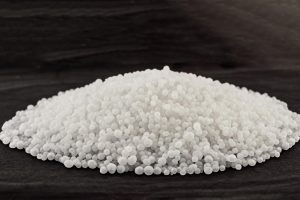UREA
What Is Urea?
Urea is the end product of the protein metabolism by mammals, like humans, which excrete urea as a waste product in their urine. It is highly soluble in water and is odorless in its purest state.
First isolated by G.F. Rouelle in 1773, then urea was produced synthetically in 1828 in Germany, by F. Wohler for the first time.
Manufactured urea is a white crystalline solid which is harmless and non-toxic and It is made by combining synthetic ammonia and carbon dioxide (CO2). The high nitrogen content in Urea which is 46.7 percent, makes it an effective and popular fertilizer. Urea has the highest nitrogen content of all solid nitrogenous fertilizers, and It is used widely in agricultural food production. In fact, 90 percent of the world’s urea production is used as fertilizer.
Urea is produced in 3 different forms which are prills, granules, or as a liquid. Its high nitrogen content means growers need to use less process product creating storage and transportation efficiencies.
Granular Urea is made by cooling liquid urea while rolling it in layers to create a hard, even-sized granule. Granulated urea has the advantage of creating less dust and waste During transportation.
Grades:
- Prilled Urea
- Granular Urea
- Liquid Urea
Packing:
Jumbo Bag
Urea Application
- As a nitrogen-release fertilizer
- As a stabilizer in nitrocellulose explosives
- It is used in lanthanide chemistry as an important reagent
- It is used in the manufacturing of high explosive like urea nitrate
- It used in creams or ointments to rehydrate skin
- It is used in the urea breath test to detect the presence of bacteria in the stomach
- As an ingredient in dish soap
- It is used in hair removal creams
- It is used in making pretzels as a browning agent
- It is used in the manufacture of melamine


